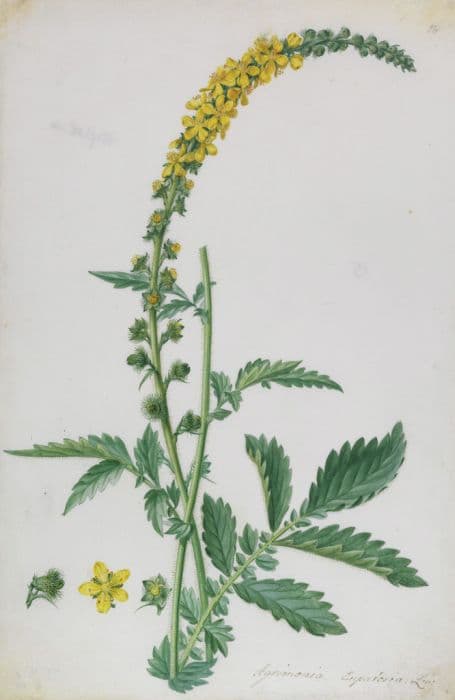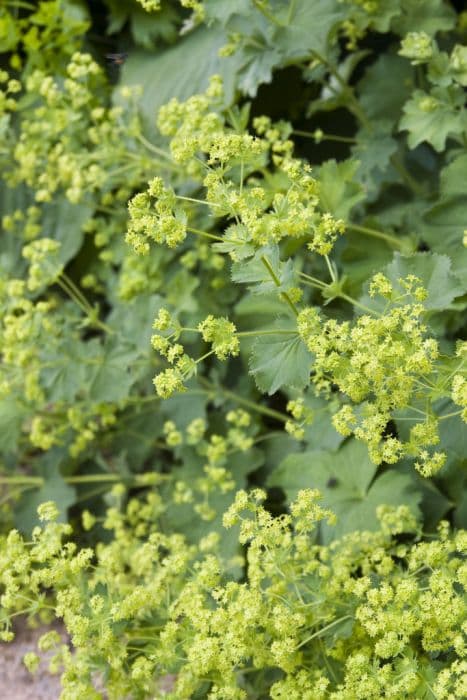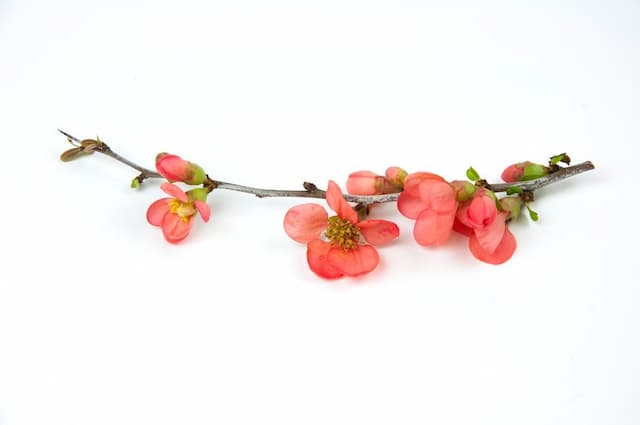Tummelberry Rubus 'Tummelberry' (F)

ABOUT
Rubus 'Tummelberry' is better known simply as 'Tummelberry'. It is a vigorous plant with a bushy growth habit showcasing an abundance of canes that give it a somewhat sprawling look. The canes themselves are covered with thorns that aid in the plant's defense. Throughout the growing season, this plant puts on a lush display with its green leaves that have a traditional shape common to many in its family. Come flowering time, 'Tummelberry' presents with clusters of delicate white blooms that are both beautiful and functional, as they attract pollinators to the plant. What really sets 'Tummelberry' apart, however, are its fruits. The plant produces berries that are larger than those you might find on other similar varieties. These berries have a deep, purple-black hue when ripe, and they are known for their juicy and sweet flavor with a slightly tart undertone. The fruit is not only appealing to the eye but also a treat for the taste buds, popular for both fresh eating and for culinary uses, such as in jams, pies, and desserts. As the season progresses, the plant's leaves and canes may take on a slightly ragged appearance after fruiting, but this is typical of many fruit-bearing perennials as they put most of their energy into producing a bountiful crop.
About this plant
 Names
NamesFamily
Rosaceae
Synonyms
Tummelberry
Common names
Rubus 'Tummelberry'
 Toxicity
ToxicityTo humans
Tummelberry, derived from the genus Rubus, is not commonly known for being toxic to humans. Generally, the fruits are edible and enjoyed by many. There is no widespread evidence of toxicity from consuming the fruits of the Tummelberry. However, as with any plant consumption, individuals may have allergic reactions to unfamiliar fruits, which could manifest as gastrointestinal discomfort, rashes, or other allergic symptoms.
To pets
Tummelberry is not known to be toxic to pets. The plant is a type of fruit-bearing bramble related to raspberries and blackberries, and its fruits are often edible for pets, such as dogs and cats. However, moderate consumption is suggested, as overeating may cause mild gastrointestinal upset due to the fiber content or possible allergic reactions. Always monitor pets when introducing new foods into their diet to avoid any adverse effects.
 Characteristics
CharacteristicsLife cycle
Perennials
Foliage type
Deciduous
Color of leaves
Green
Flower color
White
Height
5 feet (1.5 meters)
Spread
4 feet (1.2 meters)
Plant type
Shrub
Hardiness zones
6
Native area
Cultivar
Benefits
 General Benefits
General Benefits- Edible Fruit: Produces large, sweet berries that can be eaten fresh or used in cooking and baking.
- Attractive to Wildlife: The berries are a valuable food source for birds and other wildlife.
- Aesthetic Appeal: Offers ornamental value with its attractive foliage and fruit, enhancing garden aesthetics.
- Ease of Cultivation: The Tummelberry is known for being easy to grow and care for, making it suitable for many gardeners.
- Pollinator-Friendly: Flowers provide nectar and pollen for bees and other pollinating insects, supporting biodiversity.
- Seasonal Interest: Brings seasonal interest to the garden with its spring blooms and summer fruit.
 Medical Properties
Medical PropertiesThis plant is not used for medical purposes.
 Air-purifying Qualities
Air-purifying QualitiesThis plant is not specifically known for air purifying qualities.
 Other Uses
Other Uses- Dye Production: The berries of Tummelberries can be used to create natural dyes for textiles, offering shades of purple and blue depending on the mordant used.
- Wildlife Attraction: Tummelberry plants can be included in garden designs to attract pollinators such as bees and butterflies, as well as birds that feed on the berries.
- Culinary Garnish: The leaves and young shoots of Tummelberry plants can be used as a decorative garnish for desserts and cocktails.
- Photography Subject: Tummelberry plants, with their attractive berries and foliage, serve as a beautiful subject for nature and garden photography.
- Education: Tummelberry plants can be used as a tool for educational purposes, teaching children about plant growth, fruit development, and gardening.
- Craft Material: The canes of the Tummelberry, once dried, can be woven into baskets or used as structural elements in garden craft projects.
- Soil Erosion Control: The dense growth habit of Tummelberry bushes can help stabilize soil and prevent erosion on slopes and banks.
- Living Fences: Tummelberry plants can be grown in rows to create a natural, edible barrier or living fence in the landscape.
- Companion Planting: Tummelberries can be planted alongside other crops to create biodiversity within the ecosystem, potentially improving pollination and reducing pests.
- Floral Arrangements: The long, thorny canes and foliage of the Tummelberry can add texture and interest to floral arrangements.
Interesting Facts
 Feng Shui
Feng ShuiThe Tummelberry is not used in Feng Shui practice.
 Zodiac Sign Compitability
Zodiac Sign CompitabilityThe Tummelberry is not used in astrology practice.
 Plant Symbolism
Plant Symbolism- Adaptability – The 'Tummelberry' is a hybrid of multiple Rubus species, symbolizing adaptability and the ability to thrive in a variety of conditions.
- Resilience – As a hardy plant that can withstand different climates, the 'Tummelberry' represents resilience and the ability to bounce back from challenging situations.
- Protection – The thorns on a 'Tummelberry' bush serve as a natural defense mechanism, making it a symbol of protection and boundaries.
- Nurturing – The fruit produced by the 'Tummelberry' provides nourishment to wildlife, representing nurturing and caring for others.
- Growth – The vigorous growth habits of the 'Tummelberry' signify personal growth and continuous learning.
 Water
WaterTummelberry plants require consistent watering, especially during their first growing season to establish a deep root system. Water them deeply once a week, supplying about 1 to 2 gallons per plant depending on the weather conditions. During hot and dry periods, they may need additional watering. It's important not to overwater, as this can lead to root rot. The soil should be moist but not soggy. In cooler climates or during rainy seasons, reduce the amount of water to prevent waterlogging. Always check the top inch of soil for dryness before watering.
 Light
LightTummelberries thrive in full sunlight to ensure healthy growth and fruit production. They perform best when they receive at least 6 to 8 hours of direct sunlight daily. A spot with morning sunlight and some afternoon shade is ideal, particularly in hotter regions to prevent scorching. Avoid heavily shaded areas as this will reduce flowering and fruit set.
 Temperature
TemperatureTummelberry plants prefer moderate temperatures and can survive in a range between 20°F to 85°F. Frost can damage new growth and flowers, so ensure that the plant is protected or cover it when frost is expected. The ideal growing temperature range for tummelberries is between 60°F and 75°F, which promotes optimal growth and fruiting.
 Pruning
PruningTummelberries require annual pruning to maintain plant vigor and fruit quality. After fruiting, prune out the canes that have produced berries, as they won't fruit again. In late winter or early spring, before new growth starts, thin the canes to about six strong shoots per plant to allow for air circulation. Pruning is also a good time to remove any dead, damaged, or diseased canes to keep the plant healthy.
 Cleaning
CleaningAs needed
 Soil
SoilTummelberry requires well-draining, fertile soil with a pH of 5.5 to 6.5. A mix of garden soil, compost, and peat moss or well-rotted manure works well. Mulch on top to retain moisture and suppress weeds.
 Repotting
RepottingTummelberries, being bramble fruits, do not typically require repotting as they are grown outdoors and can spread through their root system, especially if provided with ample space from the beginning.
 Humidity & Misting
Humidity & MistingTummelberries prefer outdoor conditions where the humidity is naturally regulated; they do not have specific humidity requirements but can tolerate a range provided they are well-watered.
 Suitable locations
Suitable locationsIndoor
Ensure full sunlight, good air circulation, and support for Tummelberry canes.
Outdoor
Plant in sun, provide support for canes, ensure moist, well-drained soil.
Hardiness zone
5-9 USDA
 Life cycle
Life cycleTummelberry starts as a seed, germinating in warm, moist soil conditions. As it grows, it develops a root system and shoots, which unfold into canes and leaves. Once the plant is mature enough, typically in its second year, it blossoms with white flowers during spring, which are then pollinated. Following pollination, fruits develop and ripen usually by midsummer, turning a deep purple-black when ready to harvest. After fruiting, the canes that bore fruit die back and should be pruned away, while the plant will continue to produce new canes for future fruiting. The Tummelberry has a perennial root system, meaning it can survive through winters and regrow for multiple fruiting seasons.
 Propogation
PropogationPropogation time
Early Spring
The Tummelberry plant is commonly propagated through softwood cuttings. The best time to take these cuttings is in late spring or early summer when new growth is soft and flexible. To propagate by cuttings, a piece of the stem about 5 to 6 inches (roughly 12.7 to 15.24 cm) long is cut from a healthy Tummelberry plant. The lower leaves are stripped off, and the cut end is dipped in rooting hormone powder to stimulate root growth. The prepared cutting is then planted in a pot filled with a mix of peat and perlite or a well-draining potting mix. It's important to keep the soil moist but not waterlogged, and the cuttings should be placed in indirect light until they have rooted, which usually takes several weeks. Once the cuttings have established a strong root system, they can be transplanted into the garden or larger pots.









